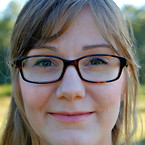In February, carnival celebrations reach their peak. Especially in the Rhineland, thousands of costumed people visit masked balls or gather on the streets to watch parades.
A centuries-old tradition that has been declared as one of UNESCO’s intangible culture heritages: The “Rheinische” Carnival, held in the west of Germany. Now in February, this jolly time of the year reaches its peak: Six days before the start of Lent, cities like Cologne, Düsseldorf, Bonn, Aachen and Mainz go berserk. In case you are from abroad and have not heard of Carnival (“Karneval”), Fasching or Fastnacht before, as it is being called depending on the region: Do not be surprised if crowds of colourfully costumed, partly tipsy revellers cross your way, greeting you with a happy “Alaaf!” or “Helau!”. But be careful: It should be pointed out that you should never confuse these two salutations. Carnival revellers usually attach great importance to this difference, because there is some kind of fun rivalry between the cities. In Cologne, you say “Alaaf”, whereas “Helau” is the common carnival greeting in Düsseldorf and Mainz. Depending on the person’s mood, he or she might even give you a peck on each cheek. Especially in Cologne, the epicentre of carnival, people tend to spread these “Bützchen”.

